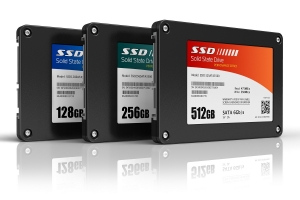Upgrading laptops and desktops is essential for small and medium businesses to improve productivity, security, and efficiency. This white paper outlines key steps to safely and effectively upgrade hardware and software, ensuring seamless business operations. Additionally, we include real-world use cases demonstrating the benefits of such upgrades.
Upgrading Laptops and Desktops for Improved Business Operations
Abstract
Upgrading laptops and desktops is essential for small and medium businesses to improve productivity, security, and efficiency. This white paper outlines key steps to safely and effectively upgrade hardware and software, ensuring seamless business operations. Additionally, we include real-world use cases demonstrating the benefits of such upgrades.
1. Introduction
As businesses grow, their computing needs evolve. Upgrading desktops and laptops can enhance speed, storage, security, and compatibility. This document provides a structured approach to upgrading hardware and software, ensuring minimal disruption to business operations. We also provide examples of how businesses have successfully upgraded their systems for improved efficiency.
2. Steps for Upgrading Hardware and Software
2.1 Evaluate Current Needs and Goals
Before upgrading, assess the existing hardware and software and define objectives such as speed improvement, increased storage, enhanced security, or compatibility with new applications.
2.2 Select the Right Hardware and Software
Research and compare different upgrade options. Ensure compatibility with existing devices and budget constraints. Reliable sources such as Intel's Computer Upgrade Checklist can assist in decision-making.
2.3 Backup Data and Files
Before starting the upgrade process, back up important files using external storage or cloud services to prevent data loss.
2.4 Install Hardware and Software Upgrades
Follow manufacturer instructions to install new hardware components and software. Ensure necessary tools are available and test the system after installation to confirm proper functionality.
2.5 Optimize and Maintain the Upgraded System
Regularly update drivers and software, scan for security threats, remove unnecessary files, and monitor system performance to maintain optimal efficiency.
3. Use Cases
3.1 Retail Business Upgrading for Faster Transactions
A small retail business upgraded its aging desktops with SSDs and additional RAM. The result was a 50% improvement in transaction processing speed, reducing checkout times and enhancing customer experience.
3.2 Law Firm Enhancing Data Security
A mid-sized law firm upgraded its laptops with encrypted SSDs and enhanced security software. This ensured compliance with data protection regulations and reduced the risk of data breaches.
3.3 Marketing Agency Expanding Creative Capabilities
A marketing agency switched to high-performance workstations with dedicated GPUs and additional RAM to support graphic-intensive applications. This upgrade significantly improved rendering speeds and allowed the team to handle more projects simultaneously.
3.4 Remote Workforce Optimization
A tech company upgraded its employees’ laptops with longer battery life and faster processors, enabling a more productive remote work environment with seamless video conferencing and collaboration.
4. HDD to SSD and RAM Upgrade
4.1 Check Compatibility and Specifications
Identify the type, size, and speed of compatible SSD and RAM using tools like the Crucial Advisor Tool or the Crucial System Scanner.
4.2 Backup Data Before Upgrading
Ensure all important data is securely backed up before replacing hardware components.
4.3 Upgrade from HDD to SSD
Replacing a traditional hard disk drive (HDD) with a solid-state drive (SSD) dramatically improves system speed and reliability. This process involves cloning the existing HDD to an SSD using tools like Macrium Reflect or EaseUS Todo Backup before physically installing the SSD into the device.
4.4 Install SSD and RAM Upgrades
Use anti-static tools and a screwdriver to safely install components. Follow manufacturer guides or online resources such as Tom's Hardware for step-by-step instructions.
4.5 Restore Data and Verify Functionality
After installation, restore data from backups or confirm that the cloned SSD is functioning properly. Verify system performance improvements and address any compatibility issues if necessary.
5. Conclusion
By following these structured steps, businesses can ensure a smooth upgrade process for laptops and desktops. These improvements lead to better efficiency, enhanced security, and increased longevity of computing resources, ultimately driving business growth. The included use cases highlight the real-world benefits of strategic upgrades in different industries.
6. References
- "Computer Upgrade Checklist - Intel." Intel
- "16 Best Practices For Safely Upgrading Your Company's Tech Systems." Forbes
- "A Comprehensive Guide to Hardware Upgrades." Riverfy
- "Update Your Business Technology to Boost Productivity." Business News Daily
- "How to Upgrade a Laptop SSD." Tom's Hardware
- "How to Upgrade Your SSD (and Retain All Data)." TechSpot
- "Small Business IT Upgrades That Pay Off." TechRepublic
- "Improving Remote Work Efficiency Through Laptop Upgrades." ZDNet
By implementing these upgrades, businesses can enhance performance and maintain a competitive edge in their industry.
